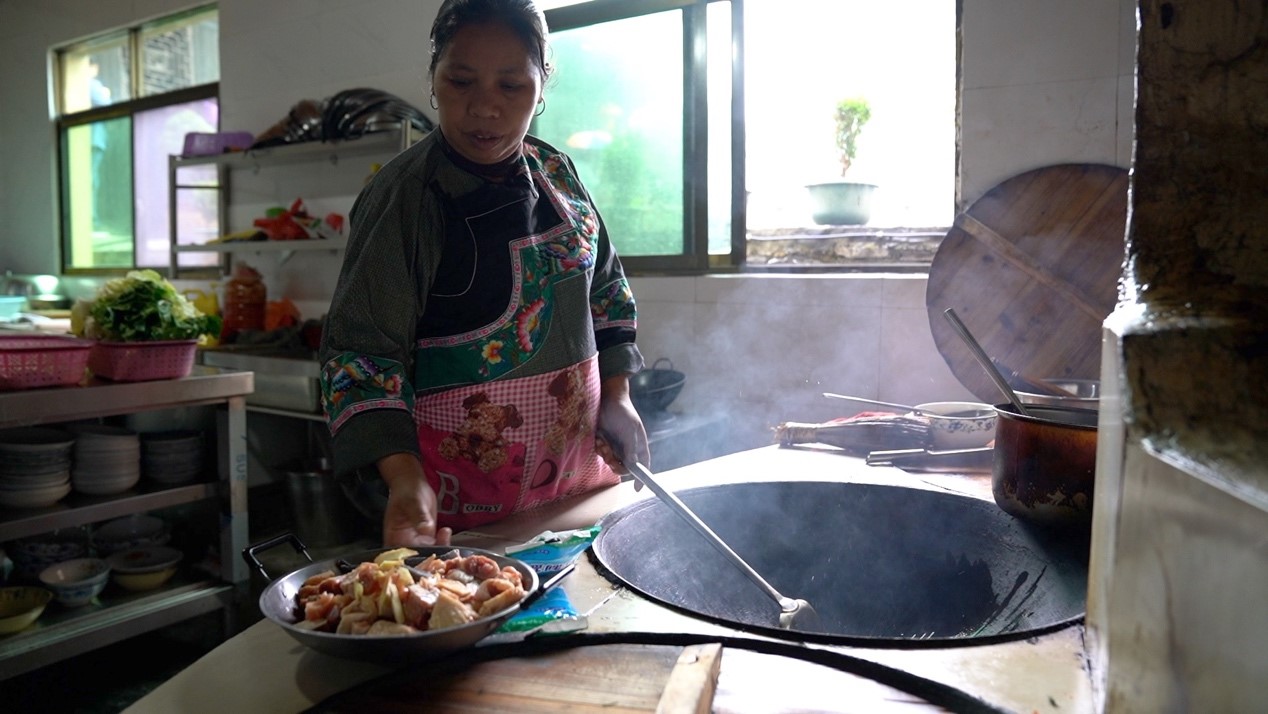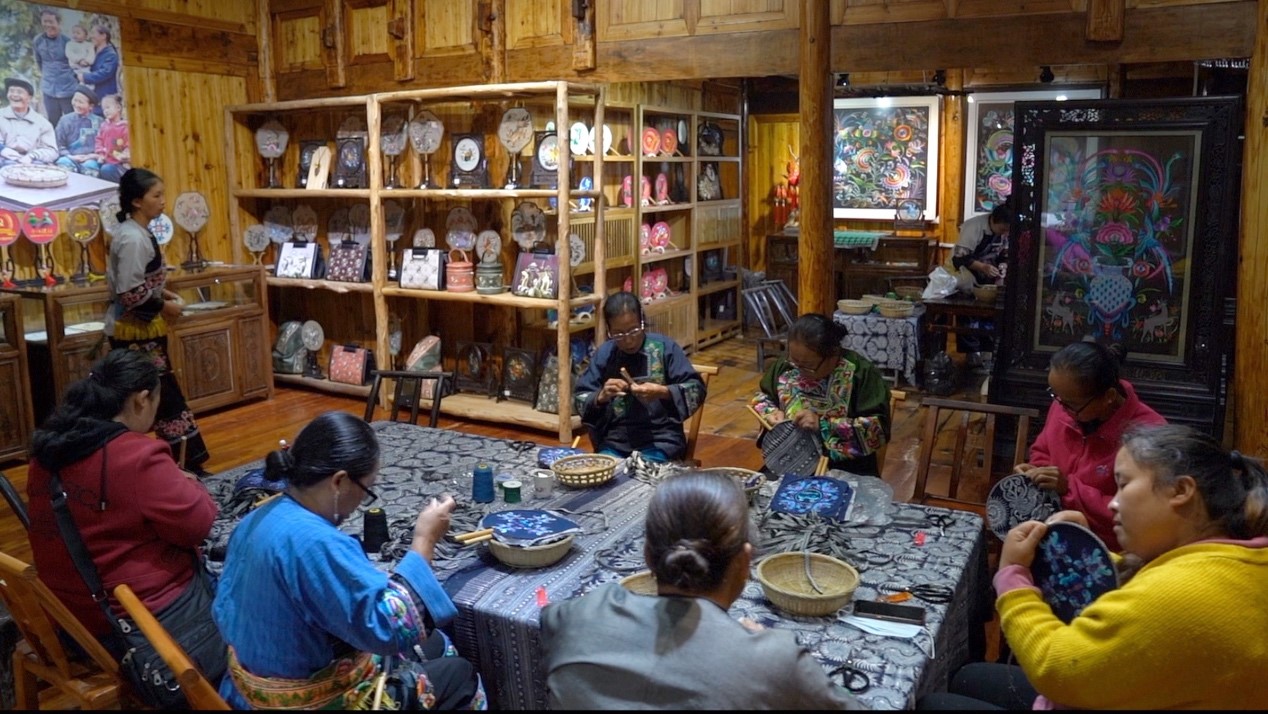02:24

One of China's major achievements in the past decade has been its poverty alleviation campaign. A good example of that is Shibadong village in south China, where "targeted poverty alleviation" has changed lives for the better.
The village is located in southern China's Hunan Province, some 1,500 km away from Beijing, where most of its 1,000 residents are of ethnic minorities.
Long Xinghua, as the owner and chef of a restaurant, serves customers every day. The specialty dish – smoked pork fried with chili peppers is one of the best sellers on her menu.

Villager Long Xinghua is preparing lunch. /CGTN
Villager Long Xinghua is preparing lunch. /CGTN
Long is happy with her business. "Now we're able to earn money without leaving the village," she told CGTN. "Tourists are coming every day, so I need to prepare so many dishes and cuisine for lunch and dinner. The busiest time for me is around 12 noon. I would say our life now is 100 times better than before."
But ten years ago, the village was one of the most impoverished places in China, due to a lack of farmland and difficult transportation. More than half of the villagers lived under the poverty line. The average annual income per person was only about 1600 yuan ($230) in 2013.

Shibadong village used to be one of China's most impoverished places. /CGTN
Shibadong village used to be one of China's most impoverished places. /CGTN
That was the year when things began to change. Chinese President Xi Jinping visited this village and proposed the concept of "targeted poverty alleviation." It means tailoring relief policies according to different local conditions, and this concept has become a guiding principle in China's fight against poverty.
Under that initiative, villagers managed to establish their pillar industries, including tourism, kiwi fruit farming and embroidery of Miao ethnic minority.
There is an embroidery workshop in the village, where more than 50 women make and sell handicrafts.
"In the past, women and children were left behind in the village as men left to become migrant workers. But now workers are coming back, and women are earning more money doing embroidery," Tian Sumei at the embroidery workshop told CGTN.

Miao embroidery has been listed on China's national intangible cultural heritage. /CGTN
Miao embroidery has been listed on China's national intangible cultural heritage. /CGTN
Tian Xiao, leader of the Rural Vitalization Work Team at the village described the change as a miracle. "Now villagers have more income, and better infrastructure and transportation. Migrant workers are coming back, and so are smiles to people's faces."
The village was lifted out of poverty in 2017. Its annual income per person exceeded 20,000 RMB ($2,800) in 2021, more than 10 times compared to that in 2013.
Shibadong set forth a model of developing rural industries, that's been followed nationwide. In 2020, China eradicated extreme poverty – about 100 million Chinese people were lifted above the poverty line in the past decade.